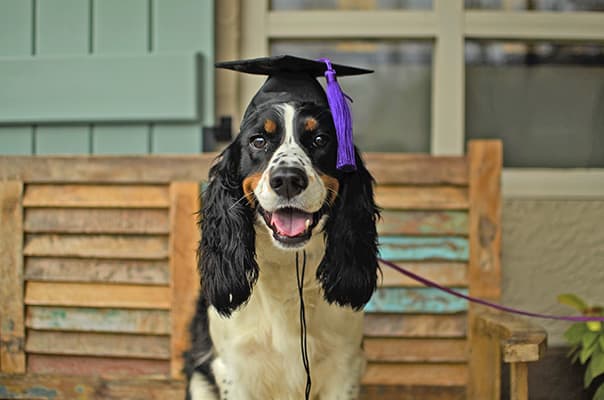Unlock Your Pet dog's Possible: Proven Pet Training Approaches for Success
Effective canine training is a nuanced procedure that pivots on comprehending canine actions and employing medically backed approaches. By including favorable reinforcement, establishing clear commands, and prioritizing socializing, pet proprietors can cultivate a productive relationship with their pet dogs.
Recognizing Canine Behavior
Recognizing pet habits is important for effective training and cultivating a positive relationship in between canines and their proprietors. A comprehensive grasp of canine body movement, vocalizations, and social interactions is important for recognizing their emotions and needs. Canines communicate mainly through non-verbal cues; for instance, a wagging tail may show exhilaration, while pinned ears can indicate worry or submission.

Additionally, ecological aspects play a considerable function in forming a pet dog's habits. Modifications in regular, new environments, or the existence of unknown individuals can cause stress or anxiety in pet dogs. Identifying these triggers enables owners to alleviate damaging reactions and establish proper training methods.
Inevitably, a deep understanding of pet actions lays the structure for effective training approaches, boosting both actions and the total bond in between the canine and its owner. dog training charlotte. This understanding is crucial for cultivating a well-adjusted, delighted canine friend
Favorable Reinforcement Methods
Efficient training depends greatly on positive reinforcement strategies, which have actually been revealed to produce substantial outcomes in forming preferred habits in canines. This method includes rewarding a dog for exhibiting particular behaviors, therefore boosting the chance that these behaviors will certainly be duplicated. Benefits can take various forms, consisting of treats, praise, playthings, or playtime, depending on what encourages the private dog.

It is important to slowly phase out incentives as the pet discovers the behavior, transitioning to intermittent support. This method preserves the behavior with time while protecting against reliance on constant rewards. By concentrating on favorable support, instructors can grow a trusting partnership with their canines, promoting a cooperative and healthy and balanced training environment that boosts general obedience and performance.
Developing Consistent Commands
A basic element of effective pet dog training is the establishment of constant commands. Consistency in commands is essential for reliable communication in between the pet and the fitness instructor. When commands are uniform, pets discover to connect certain words with wanted habits, which increases the training procedure and improves understanding.
To establish consistent commands, it is crucial that all relative make use of the exact same terminology and gestures. If one individual utilizes "sit" while one more states "sit down," it can create complication for the pet. Select clear, distinct words for commands and guarantee every person associated with the dog's training sticks to these choices.
Strengthen commands through frequent technique, guaranteeing that the pet receives adequate possibilities to react correctly. When a canine efficiently follows a command, prompt favorable support ought to comply with.
Last but not least, hold your horses. click for more Developing constant commands takes time and effort. With commitment and quality, you will help your canine establish a solid understanding of assumptions, inevitably resulting in a well-behaved friend.
Socializing and Direct Exposure
Mingling a canine is crucial for fostering a positive and well-adjusted buddy. This process includes subjecting your canine to a variety of environments, individuals, and various other pets to create their social skills and adaptability. Early socializing, ideally in between the ages of 3 to fourteen weeks, is important, as it prepares for a pet's future habits.
Throughout socialization, aim to offer favorable experiences in various settings, such as parks, hectic roads, and homes with various other pets. Introduce your pet dog to different stimulations, consisting of audios, views, and scents, ensuring that each experience is rewarding. This exposure aids alleviate anxiety and anxiousness, paving the way for an extra durable canine.
Involving in regulated team play sessions with other pet dogs can likewise boost social abilities, instructing your pet dog ideal communications and boundaries. Prioritizing socialization will considerably contribute to your pet dog's general happiness and habits throughout their life.
Conquering Common Educating Obstacles

Pet dogs may have a hard time to focus in active or unknown settings. Slowly desensitize your dog to interruptions by starting training in a peaceful environment and slowly presenting even more stimuli as they come to be skilled.
Additionally, behavior issues like leaping or excessive barking can come to be aggravating. Address these by educating different habits, such as sitting smoothly when greeting guests. Uniformity and perseverance are important; enhance wanted behaviors constantly and avoid scolding, which can bring about confusion.
Last but not least, identify that each dog is one-of-a-kind, and training timelines might differ. Tailor your technique to your pet dog's specific requirements, and seek professional assistance if necessary. With willpower and the ideal methods, getting rid of these challenges can cause a well-trained, pleased canine companion.
Verdict
To conclude, opening a dog's possible requires a detailed strategy that includes an understanding of canine actions, the application of favorable support methods, and the establishment of regular commands. Early socialization and exposure to varied atmospheres better boost a pet dog's adaptability and confidence. By dealing with typical training challenges with customized methods and patience, a unified and cooperative partnership in between pet and handler can be cultivated, eventually leading to a mannerly companion with the ability of growing in different scenarios.
Reliable pet training is a nuanced procedure that pivots on recognizing canine behavior and using scientifically backed strategies.Recognizing canine behavior is essential for effective training and promoting a favorable relationship in between pets and their proprietors.Reliable training counts greatly on positive reinforcement strategies, which have been informative post revealed to produce linked here considerable results in forming preferred behaviors in canines. When commands are consistent, dogs find out to link specific words with preferred behaviors, which accelerates the training procedure and enhances understanding.
In final thought, unlocking a canine's potential requires a comprehensive technique that integrates an understanding of canine behavior, the application of positive reinforcement techniques, and the establishment of consistent commands.